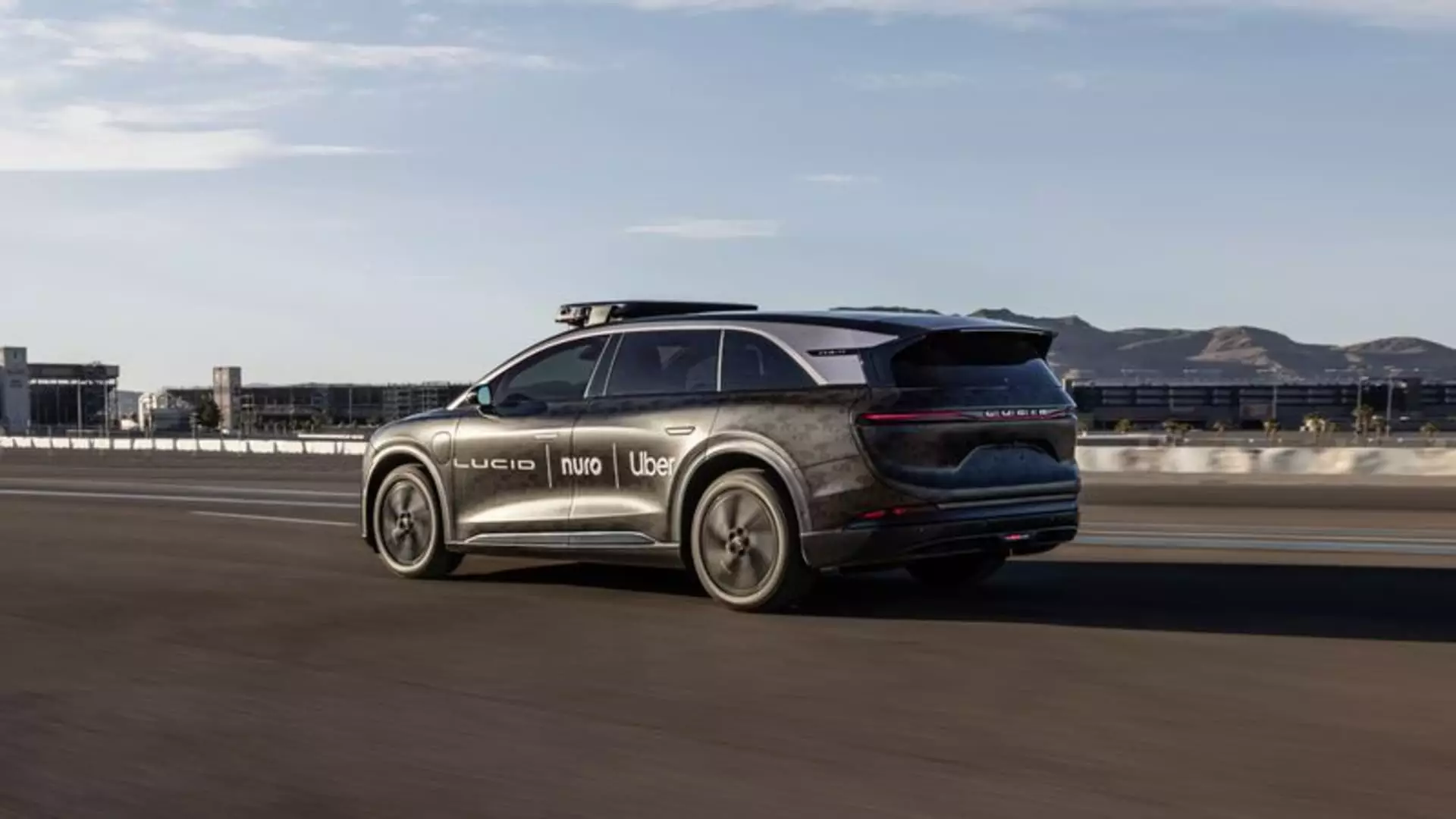In a landscape driven by technological innovation, the recent announcement of Uber’s plan to deploy over 20,000 robotaxis within six years stands out as a testament to the relentless push toward automation. This initiative aims to reshape urban transportation by integrating autonomous vehicles into daily life, promising unparalleled convenience and efficiency. Underpinning this vision is a constellation of strategic partnerships— notably with Lucid Motors and Nuro— designed to propel Uber to the forefront of the driverless revolution. While such ambition is commendable, it demands a critical look beneath the surface, questioning whether the industry’s promises can match reality in a manner that benefits society without succumbing to hype and overreach.
Technological Overconfidence: The Illusion of Perfection
At the core of these developments is the assumption that autonomous technology, particularly Level 4 self-driving systems, can seamlessly replace human drivers under diverse and unpredictable conditions. Nuro’s software and Lucid’s EV technology are positioned as cutting-edge, capable of handling normal traffic and weather with minimal human intervention. Yet, even the most sophisticated systems have glaring limitations. Sensor malfunctions, unexpected obstacles, and complex urban scenarios often expose cracks in even the most advanced AI. The assumption that future iterations will mitigate these issues entirely is overly optimistic and underestimates the complexity of real-world environments. As we rush toward deployment, a sobering question remains: Are we overly confident in the technology’s readiness, potentially risking safety and public trust?
The Expansion’s Economic and Social Implications
Deploying tens of thousands of robotaxis isn’t merely a technological leap; it carries profound economic and social consequences. On the positive side, mass adoption of autonomous vehicles could reduce transportation costs and increase accessibility for marginalized populations. However, this also spells significant disruption for millions of human drivers whose livelihoods hinge on traditional ride-hailing services. The shift risks intensifying unemployment in sectors that cannot easily adapt, further entrenching inequality. Moreover, the centralization of mobility in corporate-controlled fleets may diminish choice and contestability in the transportation market, conflicting with principles of free enterprise and consumer freedom.
The Center-Right Perspective: Balancing Progress with Prudence
From a center-right vantage point, the rush to autonomous ride-sharing must be tempered with cautious skepticism and prudence. While innovation drives economic growth and enhances consumer welfare, it must also be anchored in sound regulatory standards that prioritize safety, accountability, and fairness. The reliance on private sector giants and billion-dollar investments raises concerns about monopolistic tendencies and the potential sidelining of smaller players or local governments. Instead of blind faith in tech giants’ promises, policymakers must advocate for rigorous testing, transparent accountability, and incremental rollout strategies. Only through measured progress can society harness the benefits of automation without falling prey to unintended consequences or regulatory capture.
Implications for the Future of Urban Transportation
The integration of autonomous vehicles into urban environments represents a pivotal juncture. If managed responsibly, it could lead to more sustainable, less congested cities with smoother traffic flow and improved safety. However, the risk lies in premature deployment driven by corporate profits, disregarding unresolved safety concerns or broader societal impacts. Both urban planners and regulators should scrutinize these developments critically, demanding evidence of safety, reliability, and public acceptance before large-scale deployment. A failure to do so could undermine trust in autonomous systems and delay genuine progress in sustainable urban mobility.
A Reality Check on the Autonomous Dream
Despite the promise of a driverless future, reality remains complex, often defying the optimistic narratives portrayed by corporate announcements. Technology’s current state suggests that autonomous ride-hailing might still be years away from achieving true, ubiquitous reliability. The hype risks overshadowing the need for comprehensive safety simulations, incremental testing, and regulatory oversight. Rather than accepting this march toward automation uncritically, stakeholders— from consumers to policymakers— need to demand accountability, safety, and genuine benefits. Only then can the autonomous vehicle revolution evolve from a commercial spectacle into a meaningful improvement for society at large, not just an alluring vision for the future.

